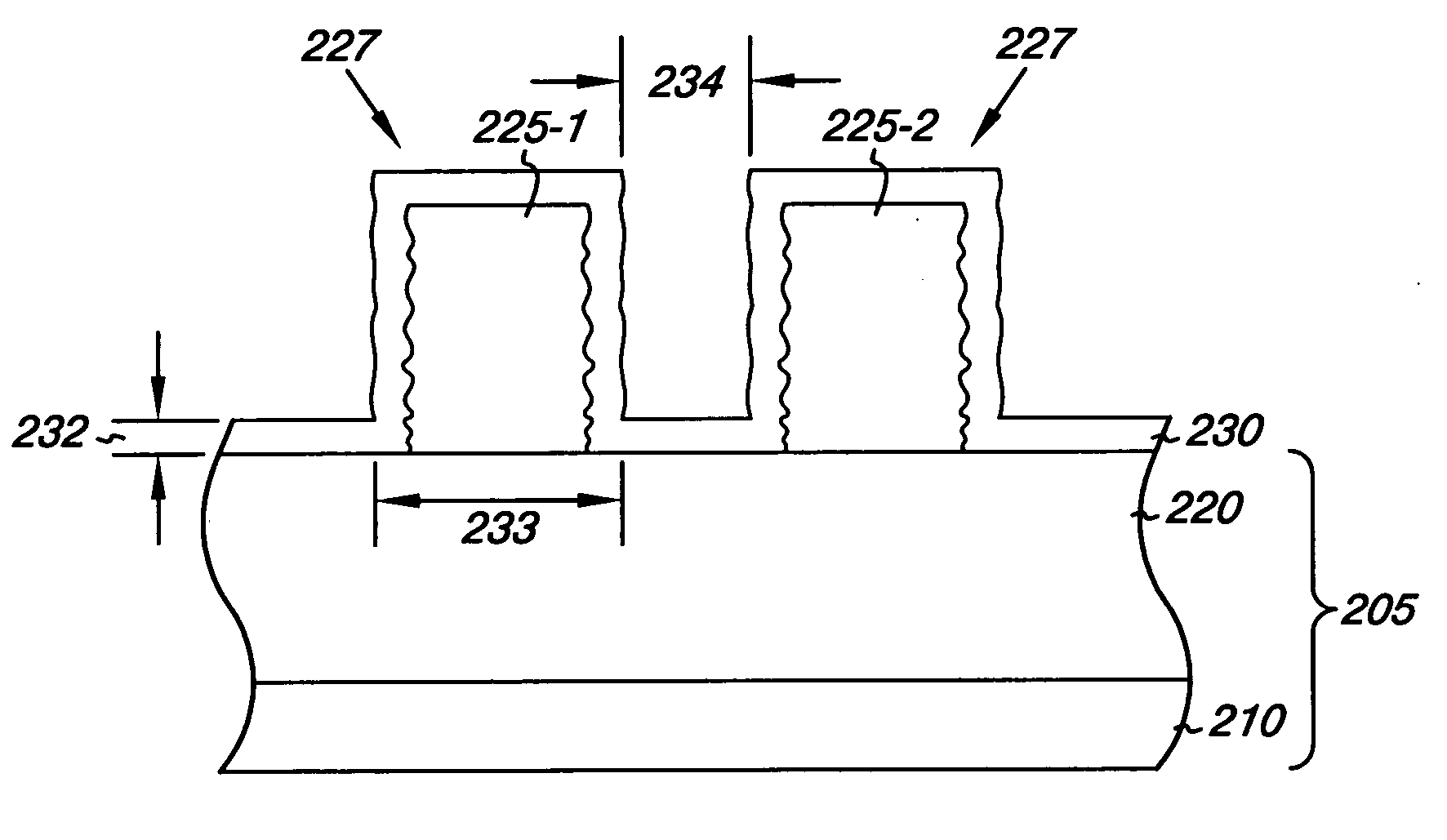Line edge roughness reduction
a technology of etched substrates and rough edges, applied in the field of etching substrate methods, can solve the problems of undesirable effects of integrated circuit components, the inability so as to reduce the roughness of etched substrates
- Summary
- Abstract
- Description
- Claims
- Application Information
AI Technical Summary
Benefits of technology
Problems solved by technology
Method used
Image
Examples
Embodiment Construction
[0026]“Substrate” or “substrate assembly,” as used herein, refers to a semiconductor substrate such as a base semiconductor layer or a semiconductor substrate having one or more layers, structures, or regions formed thereon. A base semiconductor layer may be the lowest layer of silicon material on a wafer or a silicon layer deposited on another material, such as silicon on sapphire or silicon on insulator, among other examples.
[0027]“Layer” as used herein can refer to a layer formed on a substrate using a deposition process. The term “layer” is meant to include layers specific to the semiconductor industry, such as “barrier layer,”“dielectric layer,” and “conductive layer.” (The term “layer” is synonymous with the term “film” frequently used in the semiconductor industry). The term “layer” is also meant to include layers found in technology outside of semiconductor technology, such as coatings on glass. In the context of this document, the term “layer” encompasses both the singular...
PUM
 Login to View More
Login to View More Abstract
Description
Claims
Application Information
 Login to View More
Login to View More - R&D
- Intellectual Property
- Life Sciences
- Materials
- Tech Scout
- Unparalleled Data Quality
- Higher Quality Content
- 60% Fewer Hallucinations
Browse by: Latest US Patents, China's latest patents, Technical Efficacy Thesaurus, Application Domain, Technology Topic, Popular Technical Reports.
© 2025 PatSnap. All rights reserved.Legal|Privacy policy|Modern Slavery Act Transparency Statement|Sitemap|About US| Contact US: help@patsnap.com



